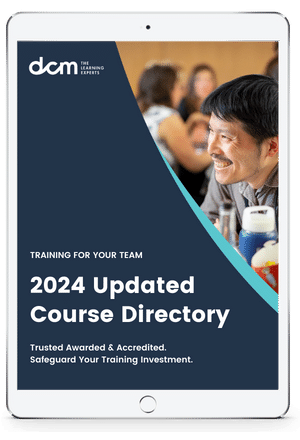In this post, we’ll briefly discuss the benefits of the Scrum framework, how we can use it and our own Andrew Gibson, Senior Trainer Partner and Scrum & Agile Coach explains what Scrum is and how it works.
According to Ken Schwaber and Jeff Sutherland – who developed Scrum and the Scrum Guide – Scrum is defined as:
“A framework within which people can address complex adaptive problems, while productively and creatively delivering products of the highest possible value.”
The Scrum framework promotes teamwork, accountability, clear common goals and continuous improvement of the product as well as that of the team and the working environment.
It’s ideally used in projects with requirements that change frequently. Scrum is both iterative and incremental and helps deliver functional products more frequently.
Benefits of the Scrum framework includes:
- Faster development of quality products
- Increased return on investment and lower costs
- Decrease in time to market
- Increased customer satisfaction
- More motivated, productive and happier employees
- Reduced risk rate
Uses of Scrum
Scrum was initially developed for managing and developing products. Starting in the early 1990s, Scrum has been used extensively, worldwide, to:
1. Research and identify viable markets, technologies, and product capabilities
2. Develop products and enhancements
3. Release products and enhancements, as frequently as many times per day
4. Develop and sustain Cloud and other operational environments for product use
5. Sustain and renew products
Scrum has been used to develop software, hardware, embedded software, networks of interacting function, autonomous vehicles, schools, government, marketing, managing the operation of organizations and almost everything we use in our daily lives, as individuals and societies.
As technology, market, and environmental complexities and their interactions have rapidly increased, Scrum’s utility in dealing with complexity is proven daily.
Scrum proved especially effective in iterative and incremental knowledge transfer. Scrum is now widely used for products, services, and the management of the parent organization.
The essence of Scrum is a small team of people. The individual team is highly flexible and adaptive. These strengths continue operating in single, several, many, and networks of teams that develop, release, operate and sustain the work and work products of thousands of people. They collaborate and interoperate through sophisticated development architectures and target release environments.
PSM Scrum Master Reviews: Stories from Our Customers
Over the past 2 years, almost 3,000 learners (2,819 to be exact) have come to DCM to learn more about scrum and get certified. Read (and watch) their reviews to see how our courses have helped them achieve their career goals.
Inhouse Tailored Training for Your Team
We provide training programs that are developed by industry, for industry. Our range of programs can be delivered in a way that suits the needs of your business to offer your employees learning that is accessible and flexible.
We add value to your business by providing specialised, flexible and scalable training that meets your training needs. As your workforce grows and evolves, our globally certified and industry-validated learning solutions can assess, train and qualify your employees. For more information on how we can help please visit the in-house training page.
Membership, Stay Connected. Stay Relevant.
Completing a program is a point-in-time exercise that delivers huge value, but there is a next step to maintaining the currency of your skills in the ever-evolving professional world.
Membership is the next step.
A unique platform, membership is designed to ensure that you are in tune and up-to-date with the latest tools, trends and developments. Being a member provides just-in-time training and continuous professional development, and an exclusive and evolving content library informed by subject matter experts and industry leaders.







